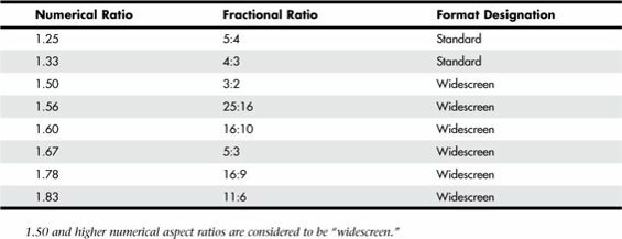Hardware Reference
In-Depth Information
A given resolution has a horizontal and vertical component, with the horizontal component the larger
of the two. The aspect ratio of a display is the ratio between the horizontal and vertical number of
pixels. It is calculated as the width (in pixels) divided by the height. A number of different aspect
ratios have been used in PC displays over the years. Most of the early display formats were only
slightly wider than they were tall. More recently, wider formats have become popular. Aspect ratios
of 1.5 or higher (numerically) are considered “widescreen” displays. Originally 1.33 (4:3) was the
most common aspect ratio for displays because it matched the aspect ratio of the original standard
definition televisions. The first generation of PC widescreen displays use a 1.60 (16:10 or 8:5) ratio,
whereas 2
nd
generation displays use the 1.78 (16:9) ratio, which is also the most popular format for
widescreen televisions. Although many PC users (myself included) preferred the additional vertical
resolution of the 16:10 ratio over the 16:9, the LCD manufacturers found it more economical to
produce the same 16:9 ratio display for PCs as they do for televisions, thus eliminating 16:10
versions as a choice.
Table 12.18
shows the various aspect ratios and designations.
Table 12.18. Standard Aspect Ratios and Designations
Figure 12.19
shows the physical difference between standard and widescreen aspect ratio display
formats.



